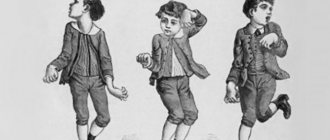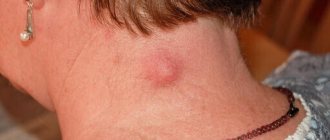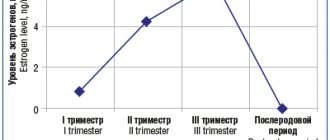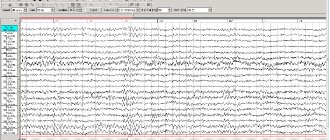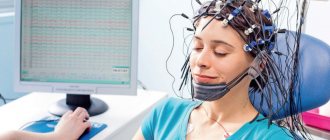general characteristics
Severe dizziness is an intense sensation of movement (rotation or displacement) of the patient himself or the space surrounding him in the objective absence of such changes.
Can be short-term, long-term, permanent. It is divided into systemic and non-systemic. Systemic vertigo, in turn, is divided into central (with the involvement of the inner ear, vestibular nerves and ganglia) and peripheral (due to damage to the cerebellum, brain stem). Severe systemic dizziness is characterized by a feeling of movement in space, falling through, swaying on the waves, instability or displacement of the support under your feet. Non-systemic dizziness occurs due to inconsistency of vestibular, visual and proprioceptive perception. Accompanied by a feeling of instability and difficulty maintaining a pose.
Unsystematic sudden dizziness
About 30% of complaints about dizziness and loss of balance are called false, that is, non-systemic. The sensations are not associated with the development of the disease and can occur in the following situations:
- a sharp change in body position when standing up after prolonged sitting or lying, a sharp turn of the head. The feeling of loss of balance lasts seconds and is associated with the redistribution of blood in the vessels;
- the appearance of feelings of fear or anxiety. Dizziness is caused by a psychological factor;
- overwork, lack of sleep;
- lack of nutrients during an irrational diet;
- dizziness during pregnancy may be associated with the development of anemia, fatigue, changes in the body during pregnancy;
- intoxication with medicinal, alcoholic and narcotic substances causes a feeling of loss of balance and dizziness due to the toxic effect on the vestibular apparatus.
Why does severe dizziness occur?
Motion sickness syndrome
Movement disease (kinetosis) is a condition that develops as a result of excessive irritation of the vestibular apparatus. Includes air and sea sickness, dizziness when riding a horse, traveling in a car, riding on attractions. It is also observed with monotonous movements of the head and body, especially rotational ones. In severe cases, it is accompanied by severe dizziness, severe nausea, and sometimes repeated vomiting.
It worsens during pregnancy, after overeating, drinking alcohol, when exposed to additional unfavorable factors (noise, odors), the presence of certain somatic and neurological diseases, and increased anxiety. Symptoms usually disappear quickly after vestibular hyperstimulation ceases. In some patients, gradually decreasing dizziness continues for several days.
Inner ear diseases
The causes of dizziness are the following lesions of the vestibular analyzer:
- BPPV.
It occurs when the position of the head changes and is provoked by the movement of otoliths freely floating in the endolymph of the semicircular canals. The attack is highly intense, lasts no more than 1 minute, and is accompanied by autonomic disorders. There is no tinnitus, hearing is normal. - Labyrinthitis.
Attacks of severe dizziness lasting from several minutes to 1-2 hours are observed in acute inflammation of the inner ear, exacerbation of the chronic form of the disease, and less often in a smoothed form are observed in the remission phase. Complemented by tinnitus, hearing impairment, hyperhidrosis, nausea, vomiting, paleness or redness of the face. - Meniere's disease.
An attack lasts from 1-2 minutes to a day or more, developing from once a year to several times a day. Caused by stretching of the labyrinthine channels against the background of an increase in the amount of endolymph. Caused by physical exertion, fatigue, and drinking alcohol. Includes autonomic disorders, balance disorders, fluctuating hearing loss, noise, and tinnitus. - Lermoyer's syndrome.
The cause of the symptom is spasm of the labyrinthine vessels. Initially, the patient complains of increasing noise in the ear for 1-2 days or several weeks. In the second phase of the attack, severe dizziness is observed, lasting from 20 minutes to several hours.
Severe dizziness
Vestibular neuronitis
The clinical picture, including severe dizziness and vegetative symptoms, develops acutely and lasts from several hours to several days. The cause of vestibular neuronitis is inflammation of the nerve after a viral or bacterial infection, and less commonly, the use of aminoglycosides. Hearing impairment, focal and meningeal neurological symptoms are absent. A distinctive feature is the single nature of the attack. A second episode of dizziness is observed in only 2% of patients; a previously intact nerve is always affected.
Idiopathic bilateral vestibular insufficiency
The reasons for the development have not been established. It manifests itself as repeated episodes of severe dizziness, oscillopsia (a feeling of vibration of stationary objects). There are no hearing impairments. Balance disorders and oscillopsia gradually increase. Over time, the same picture is formed as with symptomatic bilateral vestibular insufficiency against the background of other diseases (for example, Meniere's disease). Oscillopsia is provoked by changes in the position of the body or head; walking in the dark or on uneven surfaces becomes impossible.
Cerebrovascular disorders
Severe dizziness lasting more than a day may indicate the development of a brainstem or cerebellar stroke. If there is a sharp decrease in hearing, one should suspect a concomitant labyrinthine infarction. Vertical strabismus and certain types of nystagmus indicate damage to the central vestibular structures. When the trunk is involved, tetra- or hemiparesis, Horner's syndrome and Babinski's symptom are observed, with strokes in the cerebellum - dysarthria, ataxia.
Unlike strokes, with TIA, dizziness and other symptoms completely disappear within 24 hours. Possible sensory disturbances, transient paresis, diplopia, dysarthria, unsteadiness of walking. In patients with cerebral atherosclerosis, severe dizziness is constant. Occurs in old age. Complemented by decreased ability to work, insomnia, headaches, and memory impairment. Symptoms progress over time.
Diseases of the heart and blood vessels
Severe dizziness is caused by a sudden decrease in cardiac output. Myocardial infarction is manifested by intense pain in the chest and fear of death. With bradycardia, sick sinus syndrome and Frederick's syndrome, attacks develop against the background of pain and discomfort in the heart, weakness, shortness of breath, and exercise intolerance.
In addition, the symptom occurs with orthostatic collapse - a lack of blood supply to the brain due to a decrease in blood pressure when changing body position (standing up suddenly). The condition develops against the background of weakened vascular tone. It may be an individual feature, detected in hypovolemia of various origins, some vascular and neurological diseases, including vegetative-vascular dystonia.
Intoxication
Severe non-systemic dizziness in combination with imbalance is a sign of toxic damage to the cerebellum due to the use of benzodiazepines, lithium, and antiepileptic drugs. Dysarthria, gaze-induced nystagmus, and ataxia, more pronounced in the torso area, are detected. The history reveals treatment with the listed drugs.
With alcohol intoxication, the symptoms are supplemented by positional nystagmus (occurring when the head is tilted). In the first 3 hours after drinking alcohol, nystagmus is directed to the lower ear, then to the upper ear. Carbon monoxide poisoning is characterized by dizziness, pressing headache, nausea, vomiting, visual disturbances, unsteadiness of gait, arrhythmia, tachycardia. Psychomotor agitation and decreased criticism are possible.
Severe anemia
The severity of the symptom in anemia correlates with the severity of the disease. In patients with iron deficiency anemia, manifestations progress slowly, gradually, reaching significant severity in the absence of treatment. Complemented by shortness of breath, palpitations, weakness, pallor, dry skin. In patients with sickle cell anemia, severe dizziness accompanies sequestration crises, during which blood pressure drops sharply due to the deposition of blood in the liver and spleen.
Panic attacks
Paroxysmal, unsystematic dizziness is one of the main complaints of people suffering from panic attacks. It is combined with lightheadedness, darkening of the eyes, ringing in the ears, tachycardia, various autonomic symptoms, and peak emotional experiences. Can be observed with depression, neurasthenia, hypochondria. Often detected in patients with hysteria. Lasts 15-20 minutes, sometimes up to 1 hour.
Other reasons
The symptom is part of the clinical picture of a number of acute conditions:
- Acute blood loss.
It is observed in injuries and some diseases. With internal bleeding, severe dizziness, along with sudden pallor, thirst, tachycardia, and hypotension allows one to suspect pathology even in the absence of other obvious signs (the source of bleeding). - TBI.
Dizziness is observed with all traumatic brain injuries: concussions, brain contusions, etc. It is combined with nausea, central (not bringing relief) vomiting, and headache. The intensity of manifestations varies. Other signs are determined by the type and severity of the injury. - Profuse diarrhea.
The appearance of the symptom is due to deterioration of blood supply to the brain against the background of hypovolemia. The condition accompanies acute intestinal infections: cholera, dysentery, salmonellosis.
What does alcohol intoxication look like?
The therapist notes that there are several degrees of alcohol intoxication:
1. No influence of alcohol (concentration of ethyl alcohol in the blood is less than 0.3‰).
2. Mild degree of intoxication - from 0.3‰ to 1.5‰.
3. Moderate intoxication - from 1.5‰ to 2.5‰.
4. Severe intoxication - from 2.5‰ to 3‰.
5. Severe alcohol poisoning, which can lead to death - from 3‰ to 5‰.
6. Fatal poisoning - more than 5‰.
Moreover, each degree has its own manifestations. For example, mild symptoms are as follows. “The first external signs of alcohol intoxication are the appearance of shine in the eyes, some redness of the face, and a characteristic odor from the mouth. A mild degree is characterized by the fact that the emotional background changes, joy quickly turns into sadness, and then a good mood appears again,” says Tatyana Romanenko. In addition, symptoms such as:
- hyperemia of the skin and mucous membranes, for example, a red nose appears;
- injection of the sclera, that is, red eyes;
- increased sweating;
- heartbeat.
In a moderately severe condition, a person experiences:
- strong odor of alcohol from the breath;
- the appearance of more pronounced changes in behavior: inability to restrain one’s feelings and desires, high spirits, giving way to touchiness, irritability, anger;
- possible violation of social norms;
- euphoria;
- speech disorders.
“The distinctive feature here is the loss of coordination of the simplest actions. The person becomes inhibited, attention switches slowly. In addition, various problems of motor functions and neuromuscular disorders are noted - problems with speech, instability when standing and walking, distinct disturbances in coordination of movements, decreased tendon reflexes and pain sensitivity,” says Tatyana Romanenko.
Not intoxication, but coma. A student died on a holiday after forgetting to take insulin Read more
Then the intoxication gives way to deep sleep, and after waking up the person has vague memories of the events and his actions, the therapist notes.
If a person is deeply intoxicated, their breath will smell strongly of alcohol. The tests will contain positive chemical tests for ethyl alcohol. Severe mental disorders also begin, problems with orientation in space, severe lethargy, drowsiness, low accessibility to contact with others, problems with understanding what is being asked. “In addition, such a person has tachycardia, hypotension, hoarse breathing due to the accumulation of mucus in the mouth and nasopharynx, pale skin and mucous membranes, and sweating. Also, he is unlikely to be able to stand on his own and perform any purposeful actions,” says Tatyana Romanenko.
Diagnostics
The cause of severe dizziness is determined by a neurologist. Taking into account the existing symptoms, the patient may be referred for consultation to a vestibulologist, otolaryngologist, cardiologist, and other specialists. Dizziness is subjective and often difficult to describe. Therefore, the most important task at the initial stage of the examination is to reliably establish the presence of a symptom by differentiating it from other manifestations (visual impairment, headache).
The specialist refrains from offering his own formulations, collects complaints in detail, and asks about feelings. To determine the level of damage, a detailed neurological examination is performed to confirm neurological disorders, coordination disorders, the presence and type of nystagmus, and the preservation of the vestibulo-ocular reflex. The final diagnosis is made based on the results of the following procedures:
- Research of the vestibular analyzer
. The complex includes positional tests, caloric tests, videonystagmography, videooculography, stabilography. - Hearing research
. In diseases of the inner ear (with the exception of BPPV), hearing impairment is detected during testing with tuning forks and audiometry. If there are no disorders, selective damage to the vestibular analyzer should be suspected. - and MRI.
Informative for circulatory disorders in the brain, head injury, lesions of the inner ear. Irreversible changes due to ischemic and hemorrhagic strokes, hematoma, damage to solid structures and brain matter in trauma are well detected. For patients with cerebral atherosclerosis, MRI of cerebral vessels is recommended. - Sonography
. Using ultrasound of cerebral vessels, atherosclerotic changes are visualized. According to echocardiography, the morphofunctional parameters of the heart are determined, signs of ischemic heart disease and other cardiac pathologies are detected, which can provoke arrhythmias that cause dizziness. The results of echoencephalography confirm increased intracranial pressure and displacement of brain structures due to TBI. - Lab tests
. A general blood test makes it possible to establish the fact of blood loss and determine the type and severity of anemia. Detection of blood in stool is indicative of gastrointestinal bleeding. For victims of carbon monoxide poisoning, a carboxyhemoglobin test is performed. For intestinal infections, bacteriological examination of stool is carried out, and serological tests are performed.
Consultation with a vestibulologist
Treatment
Conservative therapy
Therapeutic tactics are determined by the type of pathology that provoked severe dizziness:
- Diseases of the inner ear
. For organic lesions, antipsychotics, anticholinergics, vasodilators, and antihistamines are used. Patients with BPPV undergo training of the vestibular apparatus. - Vestibular neuronitis
. Symptomatic therapy is carried out using vestibulosuppressors and benzodiazepine tranquilizers. The duration of the course is determined by the severity of dizziness. - Cerebrovascular disorders
. In case of strokes, measures are taken to maintain vital functions, regulate hemostasis, and prevent cerebral edema. Anticonvulsants, hypothermic and antiemetics, and neuroprotectors are prescribed symptomatically. For atherosclerosis, lipid-lowering medications and neurometabolites are used. - Heart diseases
. The treatment program may include narcotic analgesics (for heart attack), beta-blockers, antiarrhythmic drugs, thrombolytics, calcium antagonists. - Intoxication
. It is necessary to discontinue the medication that caused severe dizziness. Detoxification is in progress. Symptomatic treatment is carried out. For carbon monoxide poisoning, oxygen therapy is used. - Anemia
. Patients with iron deficiency anemia benefit from a diet rich in iron. Iron supplements are recommended, and blood transfusions are sometimes required. Therapy for crises in sickle cell anemia involves dehydration, oxygen therapy, administration of analgesics, antiplatelet agents, anticoagulants, and sometimes red blood cell transfusions.
Surgery
Depending on the etiology of severe dizziness, patients may be indicated for the following operations:
- Pathologies of the inner ear
: tympanotomy, perforation of the base of the stapes, fenestration of the semicircular canal, laser destruction of the labyrinth. - Circulatory disorders in the brain
: carotid endarterectomy, formation of vascular shunts, arterial replacement, occlusion and clipping of aneurysms. - Heart diseases
: coronary artery bypass surgery, coronary artery stenting, installation of pacemakers. - Acute blood loss
: suturing open wounds and sources of bleeding in internal organs, ligating damaged vessels.
Loss of balance
Balance imbalance is a short-term or permanent inability to control the position of the body in space. Loss of balance is characterized by an unsteady gait, swaying, lack of coordination, and unexpected falls. A sharp loss of balance is most often associated with the development of some disease (neurological, cardiological and others), and is also observed in older people. In old age, loss of balance when walking, the causes of which are not related to the course of the disease, can be explained by the general aging of the body.
Impaired balance quite often coincides with dizziness, nausea, vomiting, and general weakness. In most cases, these disorders occur due to changes in the vestibular apparatus, traumatic or other brain damage, intoxication, and diseases of the inner ear.

